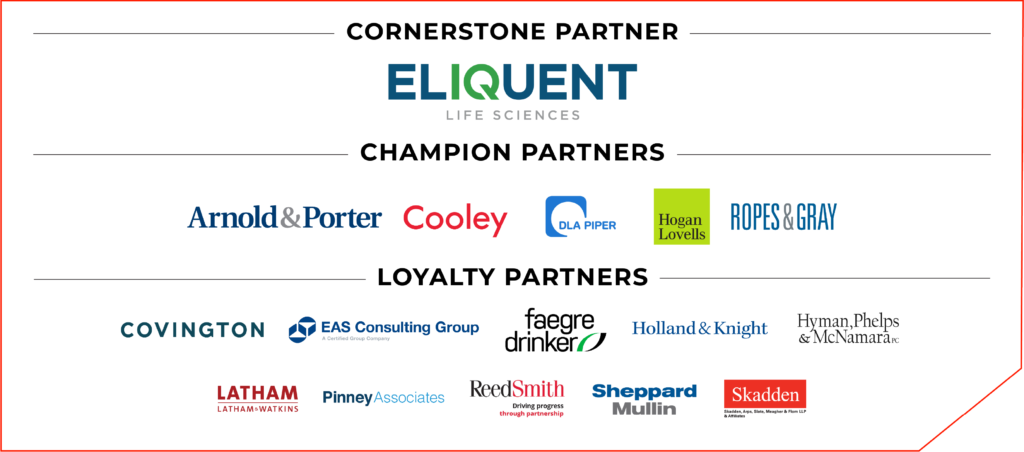Maintaining the Balance Between Encouraging Innovation and Promoting Access to Affordable Medications: FDA Looks at Improving Implementation of the Hatch-Waxman Amendments
By Patrick C. Gallagher (Duane Morris LLP)
Editing By: Sara Koblitz (Hyman, Phelps & McNamara PC)
FDA is looking for ways to improve efficiencies in the approval process for Abbreviated New Drug Applications (ANDA) to prevent distortions of the regulatory balance between encouraging innovation and accelerating availability of lower cost generic medications. On July 18, FDA hosted a public meeting seeking input from pharmaceutical industry stakeholders for concrete steps the agency can take to ensure a proper balance between innovation and access to affordable medication when executing its responsibilities under the Hatch-Waxman Act as currently amended.
To start the meeting, FDA Commissioner Scott Gottlieb identified three areas of FDA’s Drug Competition Action Plan designed to increase competition in the pharmaceutical marketplace with the goal of reduced prices and cost-savings for patients. First, FDA wants to identify instances of “gaming” the regulatory system to delay competition. Second, FDA wants to identify barriers to entry in the generic market. Third, FDA will focus on overall efficiency in reviewing ANDAs and maintaining low costs for applicants without lowering standards for approval.
To that end, Dr. Gottlieb announced that by the end of this year FDA will issue two documents to improve the ANDA approval process. First, FDA will issue an internal CDER policy in the Manual of Policy and Procedures streamlining the ANDA approval process internally at the agency. Second, FDA will draft an industry guidance directed to Good ANDA Submission Practices that will address common deficiencies observed by FDA. Dr. Gottlieb made clear that while FDA will streamline the ANDA approval process, the agency was not lowering approval standards. One way FDA will improve efficiencies is increased communication between FDA and ANDA applicants to accelerate time to approval.
Following introductory comments from Commissioner Gottlieb, Director of CDER, Janet Woodcock, Markus Meier from the Federal Trade Commission, and an FDA panel heard comments from thirty-nine individuals representing the interests of the generic pharmaceutical industry, branded pharmaceutical industry, payers and providers, academics and researchers, and patient groups. The panel included FDA and FTC representatives who had opportunities to ask questions after each presenter’s remarks, but FDA remained in “listening mode” to receive feedback from stakeholders on ways to improve administration of the Hatch-Waxman amendments.
Among the issues commonly raised during the meeting were
- Are REMS creating a distortion to improperly delay generic market entry, and if so, how can such distortion be remedied?
- How can FDA prevent abuse of REMS by branded manufacturers to prevent generic manufacturers from purchasing samples of the branded medication necessary to run the required ANDA studies?
- How can FDA distinguish Citizen Petitions filed primarily to delay generic competition from those filed primarily for the purpose of scientific or public health concerns?
- How can FDA prevent “product hopping” by branded manufacturers without impeding incremental innovation that delivers patient benefit?
- How can FDA adapt approval requirements to new knowledge about a brand product while an ANDA is under review without shifting ANDA standards of review?
From the panel’s questions, it was clear that FDA wants to identify real problems—as opposed to perceived problems—and what specific actions FDA can take to address the real problems impeding competition and generic entry to the market. As can often be the case, identifying the problems is often easier than coming up with concrete solutions for implementation by FDA.
Risk Evaluation and Mitigation Strategies (REMS)
One frequent topic of the day was the misuse of REMS to delay generic entry to the market. Among the problems identified with respect to REMS products were improper listing of REMS patents in the Orange Book, delayed negotiations for shared REMS programs, and the use of REMS to block generic manufacturers’ access to a supply of branded product to conduct necessary testing for ANDA submission and approval. Several of the stakeholders suggested that FDA could help address supply problems of REMS products by publicizing FDA letters to New Drug Application (NDA) holders permitting the sale of a REMS product to a generic manufacturer in order to complete the requirements for preparation of an ANDA. Additionally, several commenters suggested that FDA not unduly delay waivers of shared REMS negotiation requirements between branded and generic product applicants when it becomes clear that the branded product manufacturer is delaying negotiations to delay generic competition.
Timing Is Everything
A common concern addressed suspicious timing of actions by brand manufacturers to potentially delay generic approval when competition appears imminent. For example, many speakers expressed concern that Citizen Petitions are frequently used to delay generic competition rather than raise substantive scientific or public health issues. Similarly, concerns were raised about the timing of labeling changes that could be used to delay ANDA approval. In some instances, it was suggested, FDA could accept post-marketing commitments from an ANDA applicant rather than delay approval to address any issues that may arise immediately preceding ANDA approval to ensure conformity with any new product information.
Another suggestion to address Citizen Petitions was the implementation of a rebuttable presumption that Citizen Petitions filed within months of the onset of generic competition were for the purpose of delaying competition. Such an approach would place the burden on the party filing the Citizen Petition to justify the concerns being raised before the acceptance of a Citizen Petition that might delay generic market entry.
Several stakeholders also expressed concern with shifting standards against which ANDA submissions can sometimes be reviewed. When a generic manufacturer sets out on a development plan to prepare an ANDA submission to FDA, that development cost is wasted if FDA changes the standard under which the ANDA is to be reviewed just before or even after the ANDA has been submitted. Several representatives of the generic industry suggested that an ANDA should be reviewed according to the guidance and standard in place at the time the ANDA is filed. Acknowledging the apparent unfairness of such shifting standards over time, FDA questioned how the agency should balance that concern with new information about specific products, especially as the branded product is sold and used by patients in a real-world context. Again, commenters suggested that post-marketing commitments from an ANDA applicant may address FDA’s concerns while preventing delay and unnecessary cost in generic market entry.
“Product Hopping” or “Incremental Innovation”
Another area of much debate was the question of “product hopping,” a term describing a minor modification to a branded product in advance of generic competition and the subsequent redirection of the market from the original product to the follow-on product. To many stakeholders, this is a questionable practice by branded pharmaceutical companies to avoid generic competition by intentionally “tanking” the market for a branded product on the verge of generic competition in favor of another product that delivers essentially the same treatment to patients. To others, including the branded pharmaceutical industry, many of these products represent incremental innovations that deliver real benefits to patients. Depending on the product, those benefits may be seen in the areas of convenience of dosing schedule, reduction of side effects, or improved patient compliance.
Distinguishing between anticompetitive product-hopping and incremental innovation that delivers real patient benefit is perhaps easier said than done. Again, timing was a concern that raised eyebrows for some when the follow-on product came to market just before generic competition for the original product. But timing alone doesn’t necessarily mean a new product isn’t delivering patient benefit. One suggestion was for FDA to place the onus on the branded manufacturer pursuing an application for a follow-on product to show that the amended product provides patient benefit over the original product. FDA questioned whether it has the statutory authority, however, to implement a higher standard for a Supplemental New Drug Application (sNDA) approval. Even if FDA wanted to ask for justification for the follow-on product, it may require congressional amendment of the statutes to give FDA the power to implement such a procedure.
Several presenters pointed out that even though the focus of this meeting was branded-generic competition, several types of competition were at play in the pharmaceutical market, including branded-branded competition, generic-generic competition, and branded-biosimilar competition. While generic market entry can be an important driver of market competition, it is not the only form of competition that can impact drug prices.
Market Forces Outside the Context of the Hatch-Waxman Regulatory Scheme
In addition to concerns over distortions of the regulatory process that improperly delay generic market entry, FDA has expressed interest in identifying other market forces that may be discouraging or preventing generic market entrants. Among the factors identified throughout the day included consolidation among purchasers of pharmaceutical products, which accordingly reduced the number of ANDA holders able to stay in the market for a given drug product.
Additionally, it is a reality of the generic market that there are a small number of high revenue products and a high number of low revenue products. With a small group of generic manufacturers holding a large number of approved ANDAs, these realities may create some inefficiencies inherent in the market. Not all FDA-approved drug products are created equally, and, in some instances, there may not be sufficient market incentive to pursue an ANDA application through approval to market.
Finally, the growth of the generic industry, which has increased competition among generic market entrants for any given drug product, often means that products become commoditized even more quickly than ever before. While this can create benefits to patients and payers in terms of lower prices more quickly for a specific medication, it also makes it harder for generic manufacturers to recover development and regulatory costs of taking a product through the ANDA approval process. That leaves generic manufacturers fewer opportunities to recover those costs on a small group of high revenue products.
Written Comments Can Be Submitted up until September 18, 2017
In seeking to strike the balance between encouraging innovation and accelerating access to affordable medications, FDA is clearly looking for “vigorous competition” in the marketplace for pharmaceutical products. The industry should thus expect continued coordination between FDA and FTC to identify and prevent practices that are perceived to have anti-competitive effects. Each agency has different statutory authority and mandate, but they are aligned in a desire to see competition in the pharmaceutical industry leading to more affordable prices for consumers. Additionally, as FDA looks internally at its policies and procedures to implement the Hatch-Waxman amendments, the agency will be attuned to potential unintended anti-competitive side effects.
In the Notice of Public Meeting published in the Federal Register, FDA acknowledged that, in certain instances, the Hatch-Waxman regulatory scheme may have been “applied to delay generic competition to an extent that may not have been intended by the Hatch-Waxman Amendments, and in ways that may not serve the public health.” At the meeting, Dr. Gottlieb, Dr. Woodcock, and the full FDA panel made clear they were aware of the areas in which the regulatory scheme may have been distorted in some instances to delay generic competition. While FDA appreciates input from industry as to instances where the regulatory scheme may have been used to delay competition in ways not intended by the Hatch-Waxman Amendments, FDA clearly would like suggestions from stakeholders with respect to concrete steps the agency can take to achieve a better balance and prevent distortions or abuses of the regulatory scheme.
FDA understands that some solutions may include legislative proposals to Congress, but FDA appeared most interested in action items that can be achieved at the administrative or regulatory level within the context of the current statutory scheme.
The deadline for submitting written comments is September 18, 2017. The Notice of Public Meeting in the Federal Register including a call for written comments can be found at www.federalregister/d/2017-12641. Written comments can be submitted at Regulations.gov under docket no. FDA-2017-N3615.


